Abstract
Modifications based on experimental results reported in the literature are made to the Hodgkin-Huxley equations to describe the electrophysiological behavior of the Aplysia abdominal ganglion R15 cell. The system is then further modified to describe the effects with the application of the drug tetrodotoxin (TTX) to the cells' bathing medium. Methods of the qualitative theory of differential equations are used to determine the conditions necessary for such a system of equations to have an oscillatory solution. A model satisfying these conditions is shown to preduct many experimental observations of R15 cell behavior. Numerical solutions are obtained for differential equations satisfying the conditions of the model. These solutions are shown to have a form similar to that of the bursting which is characteristic of this cell, and to preduct many results of experiments conducted on this cell. The physiological implications of the model are discussed.
Full text
PDF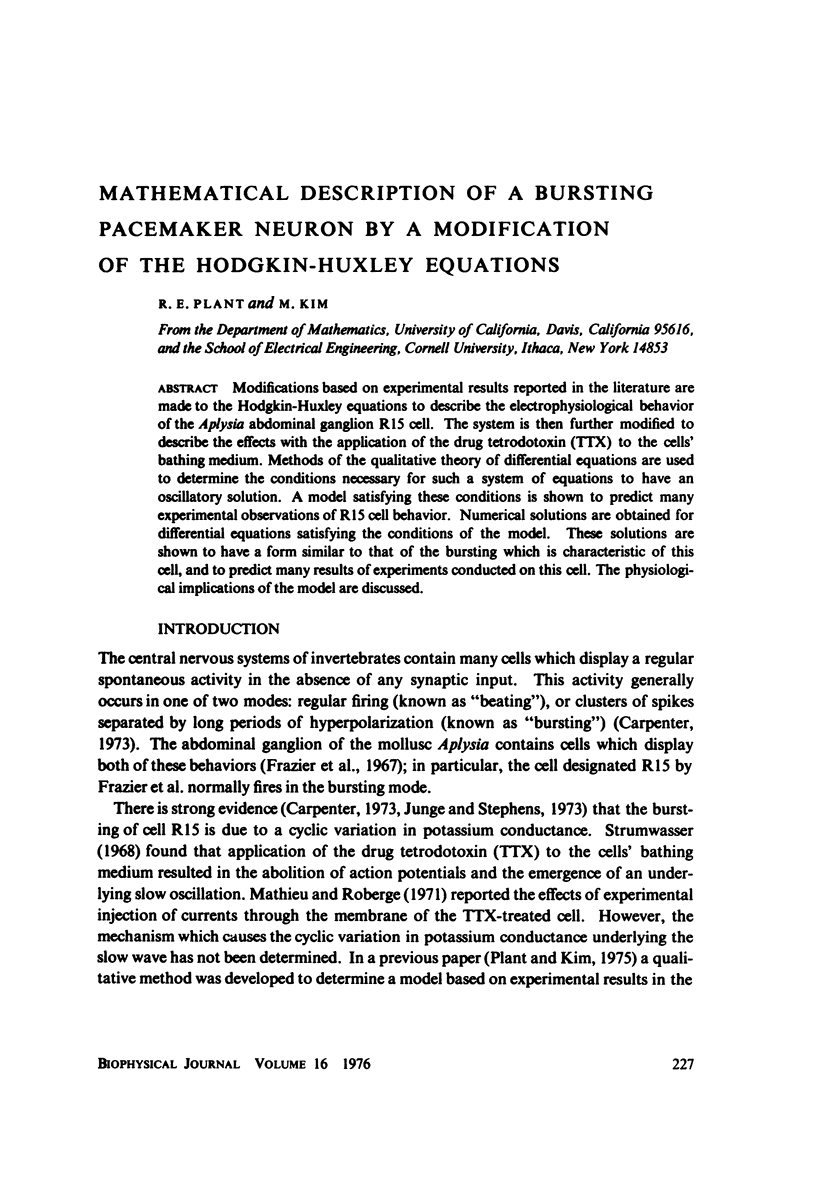
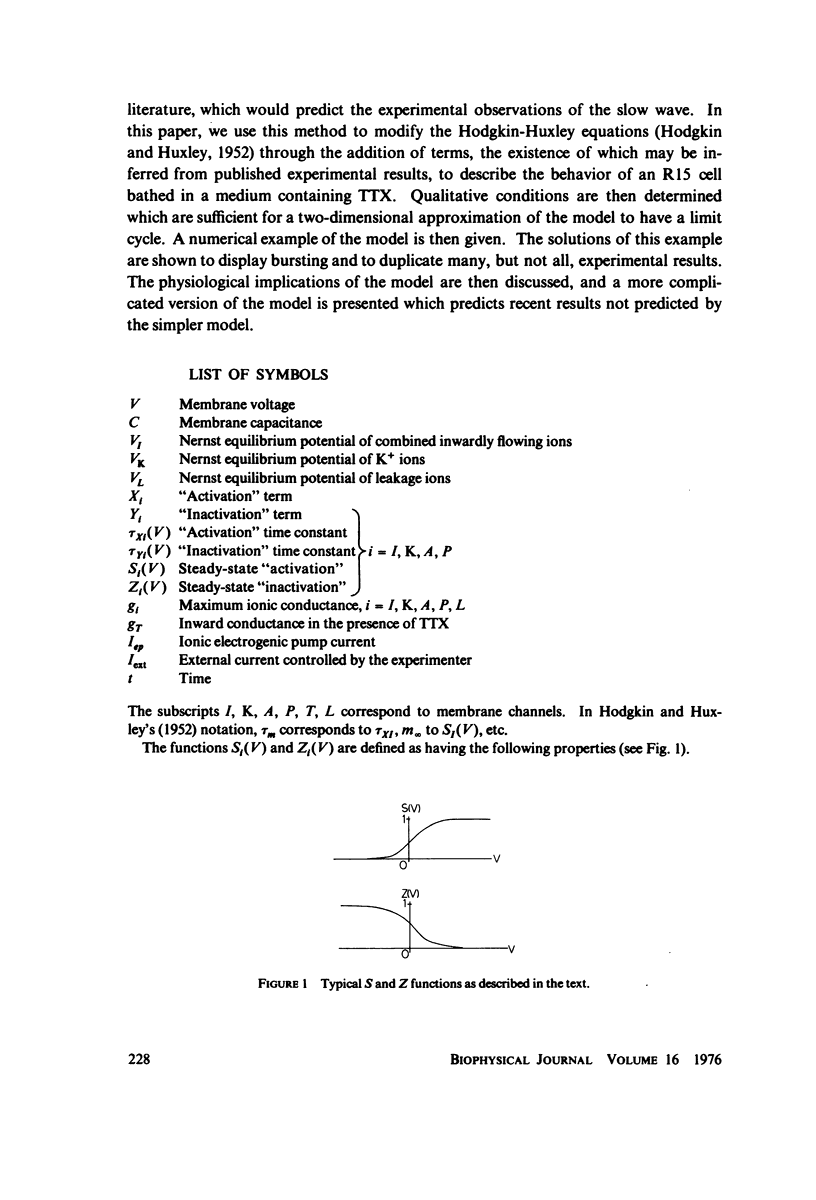
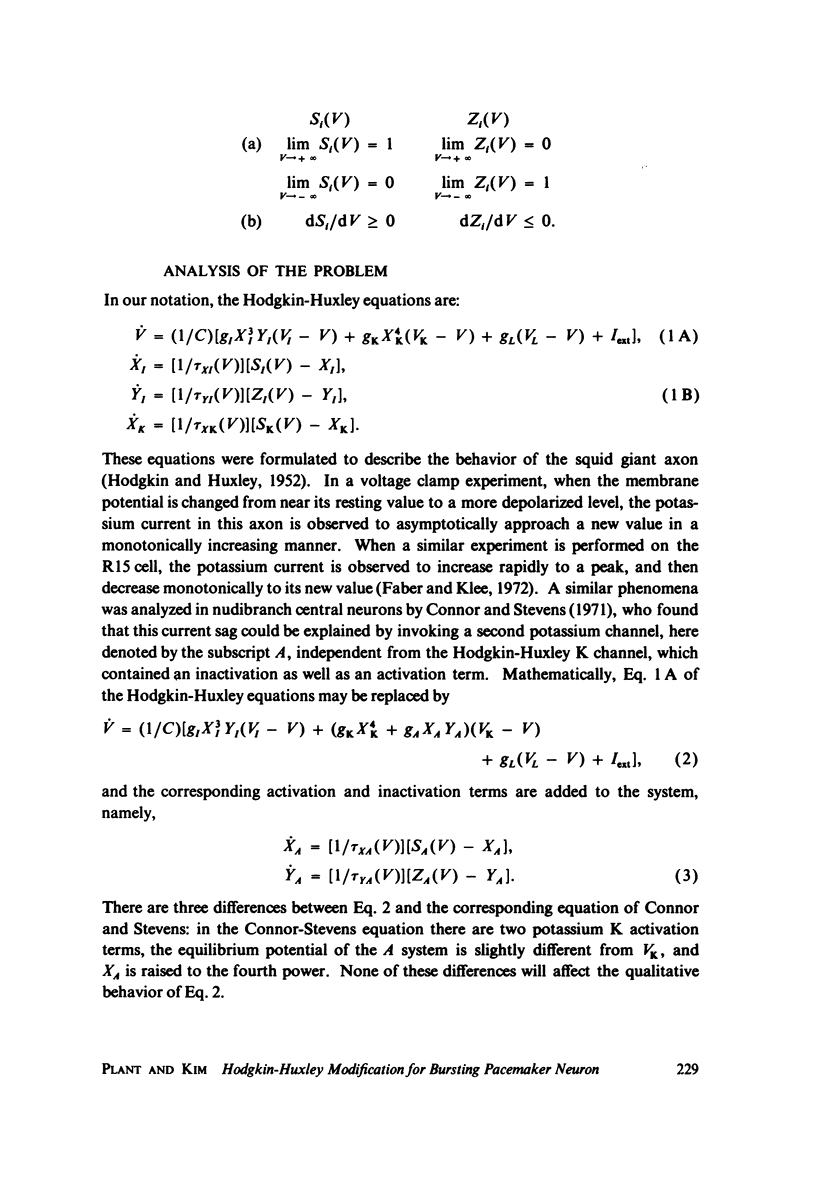

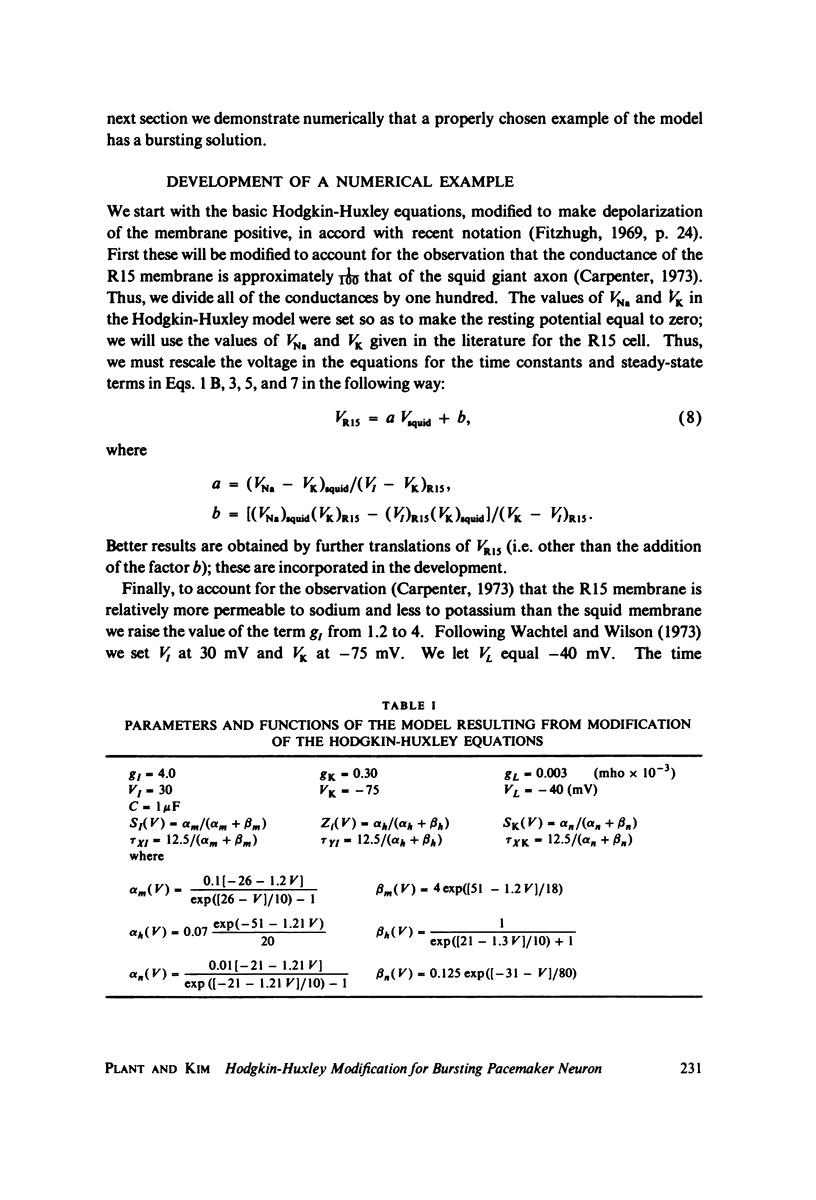
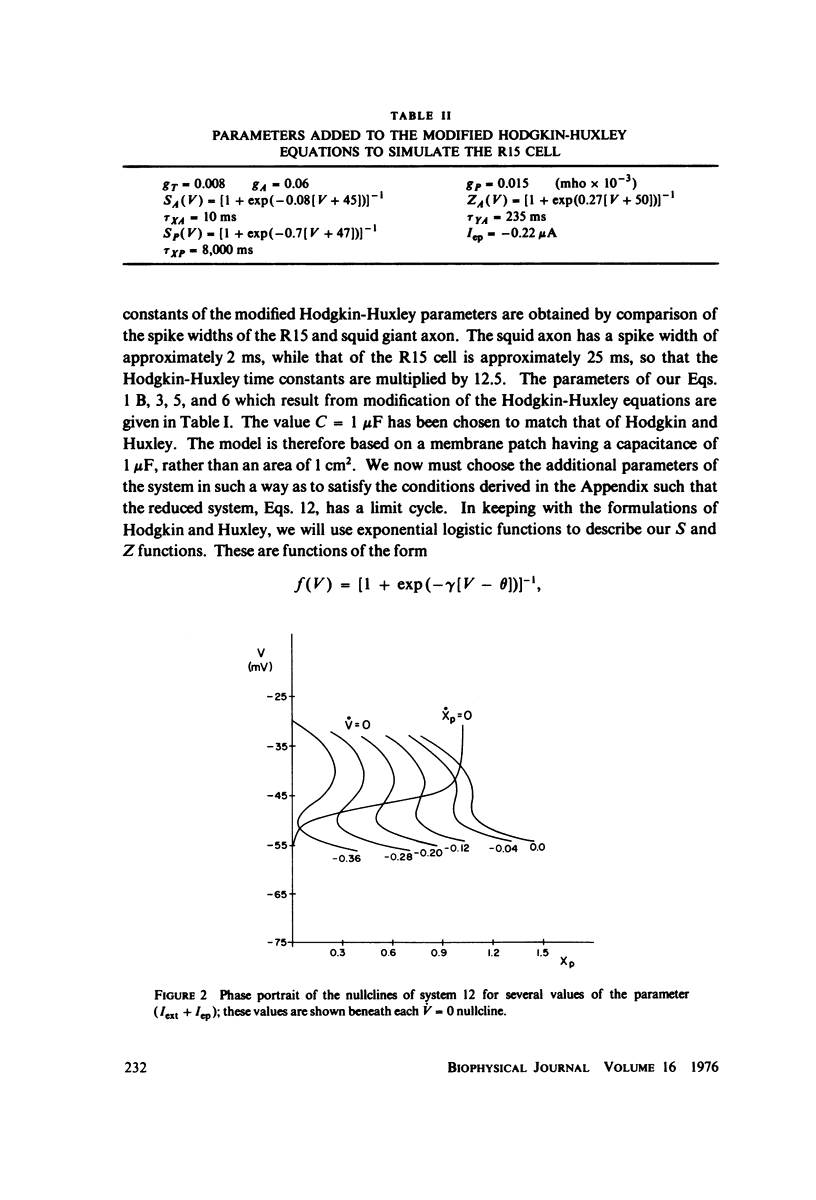
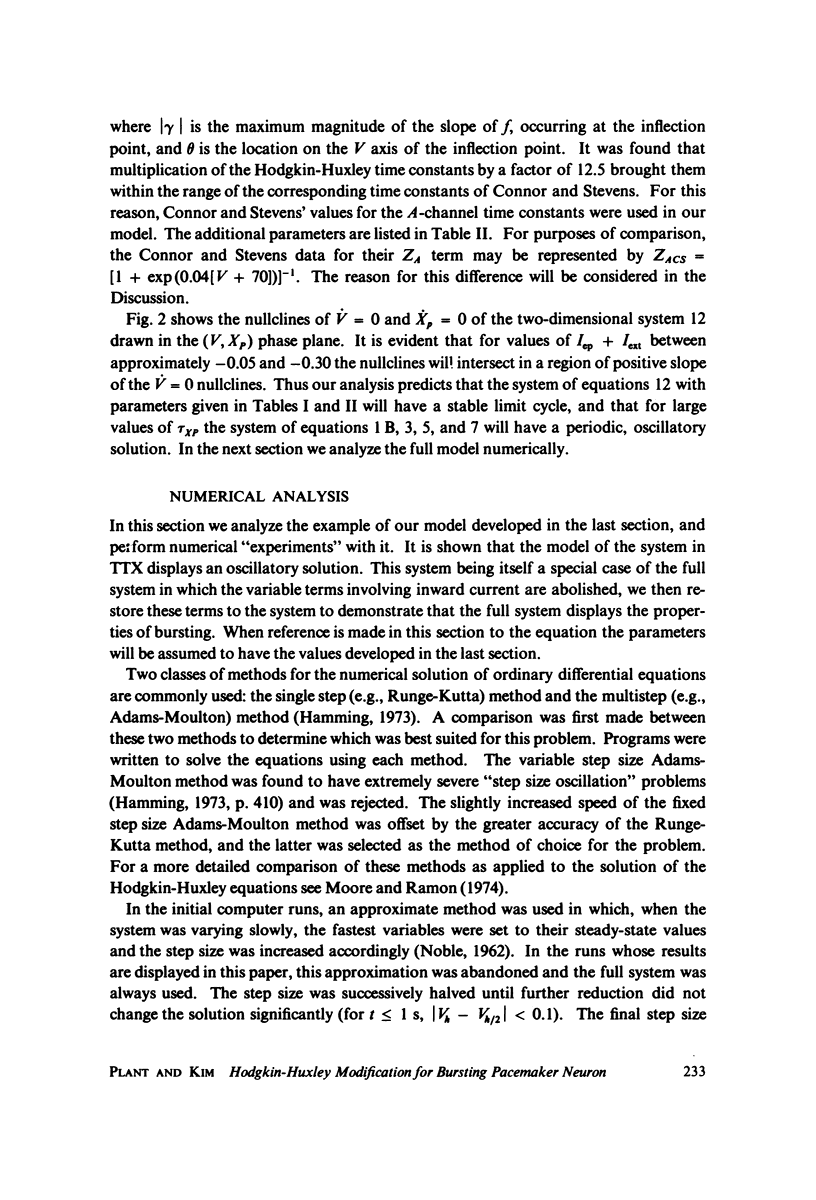
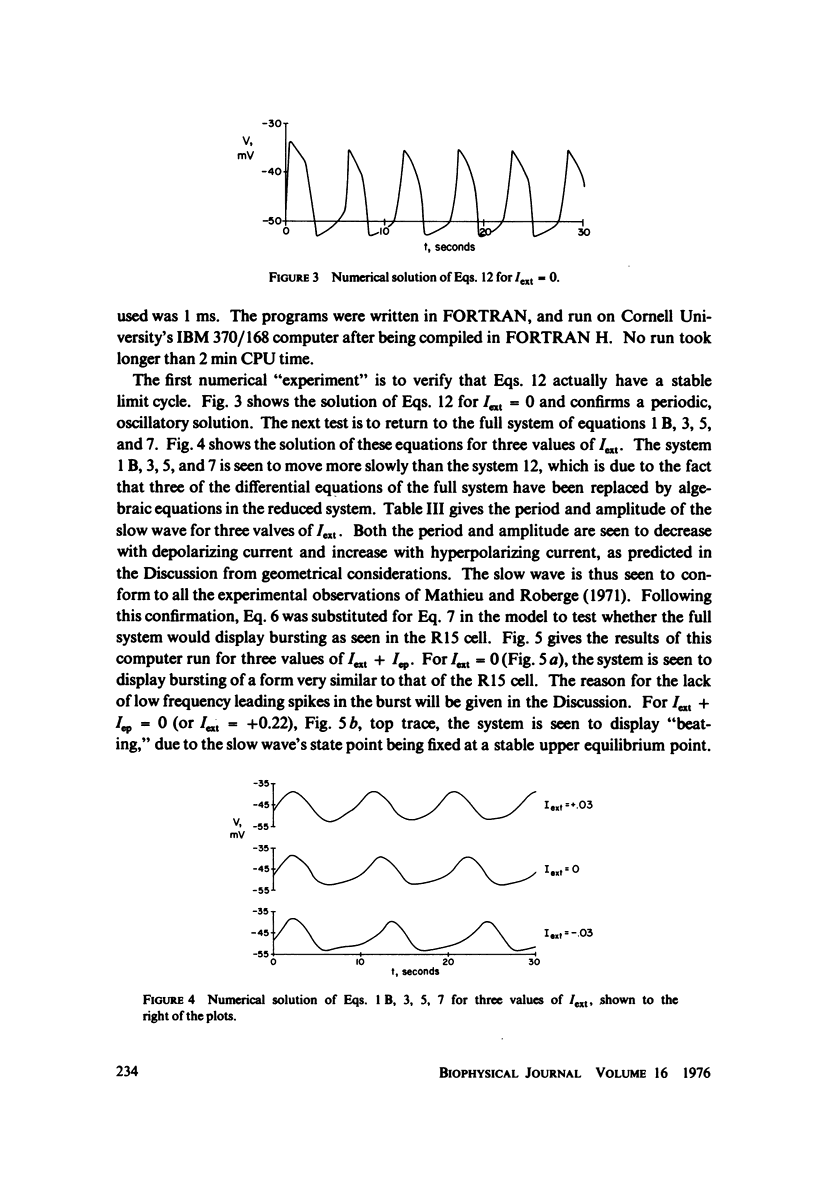
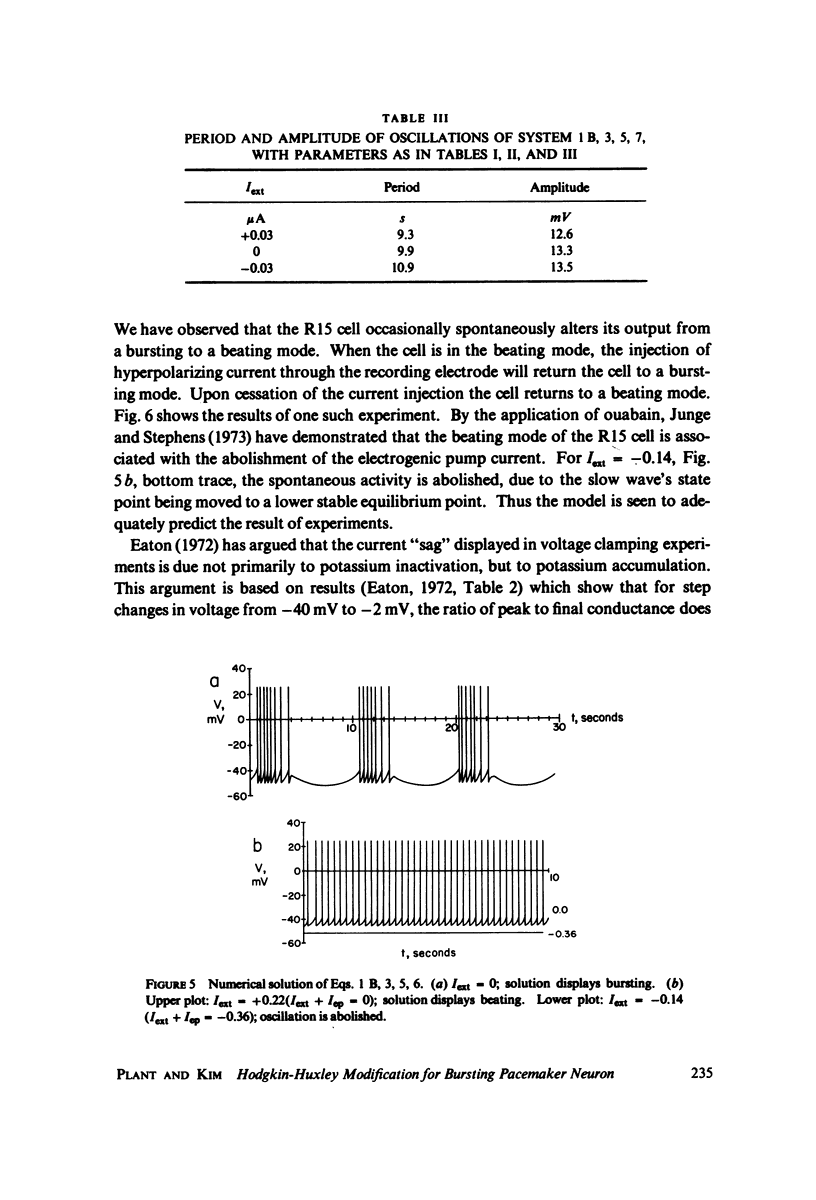
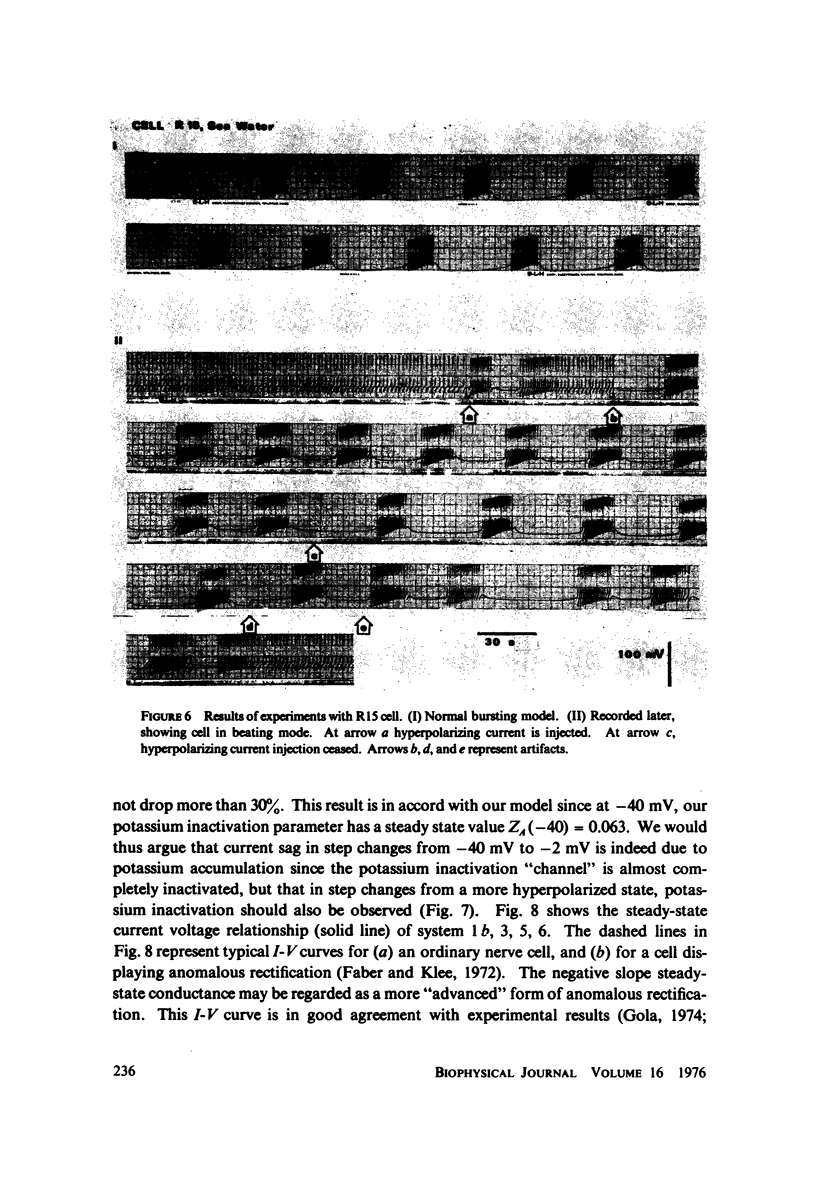
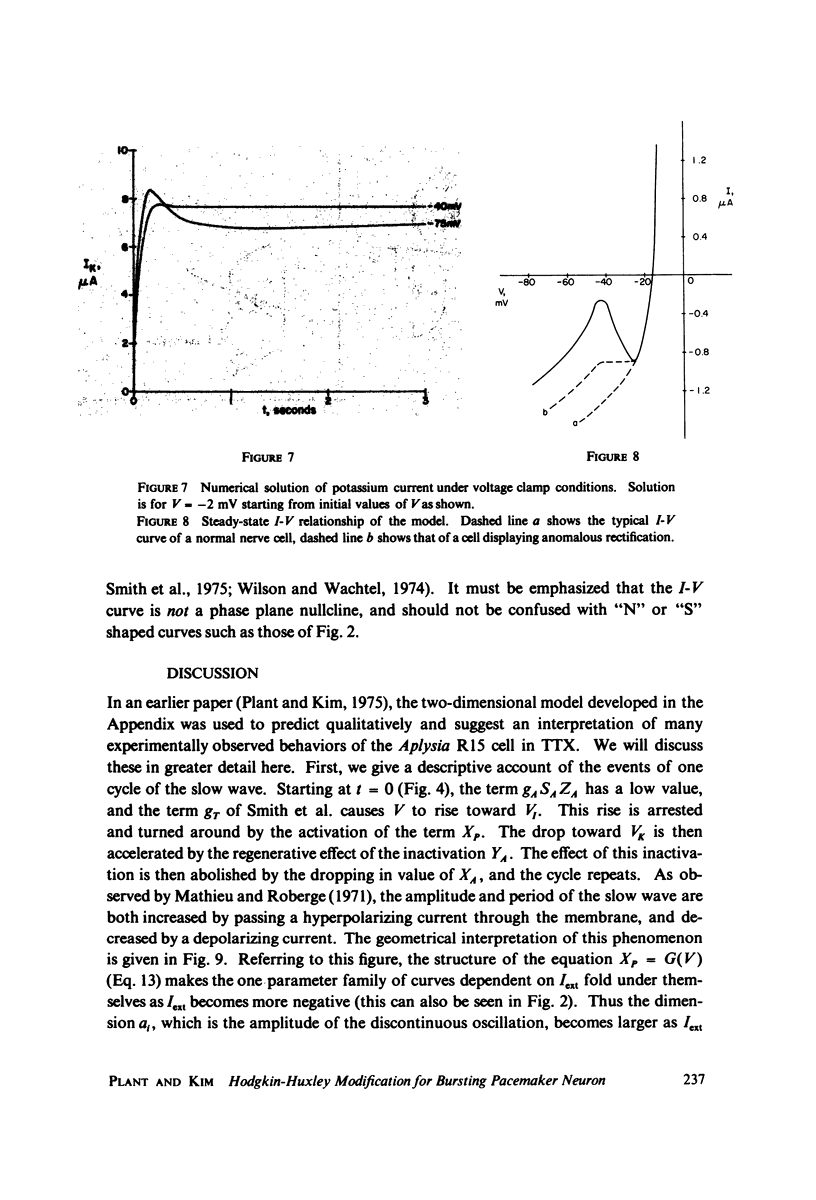
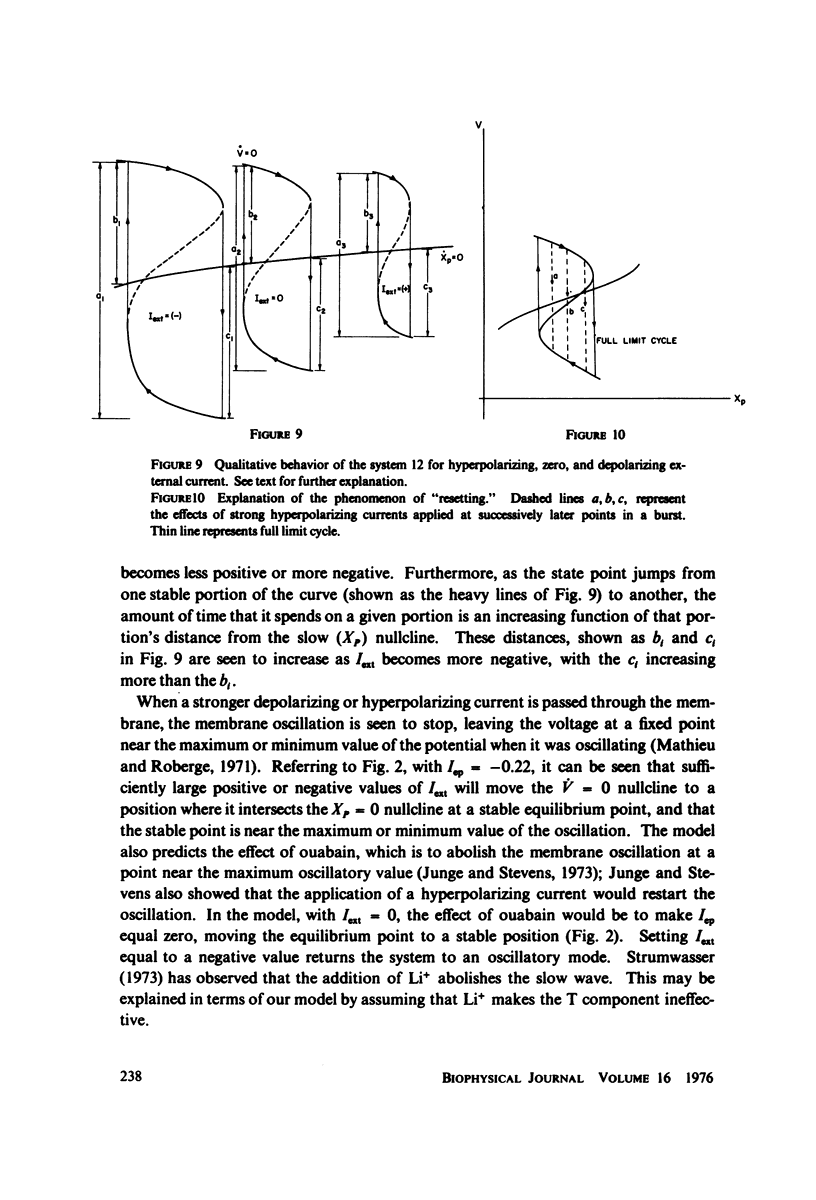
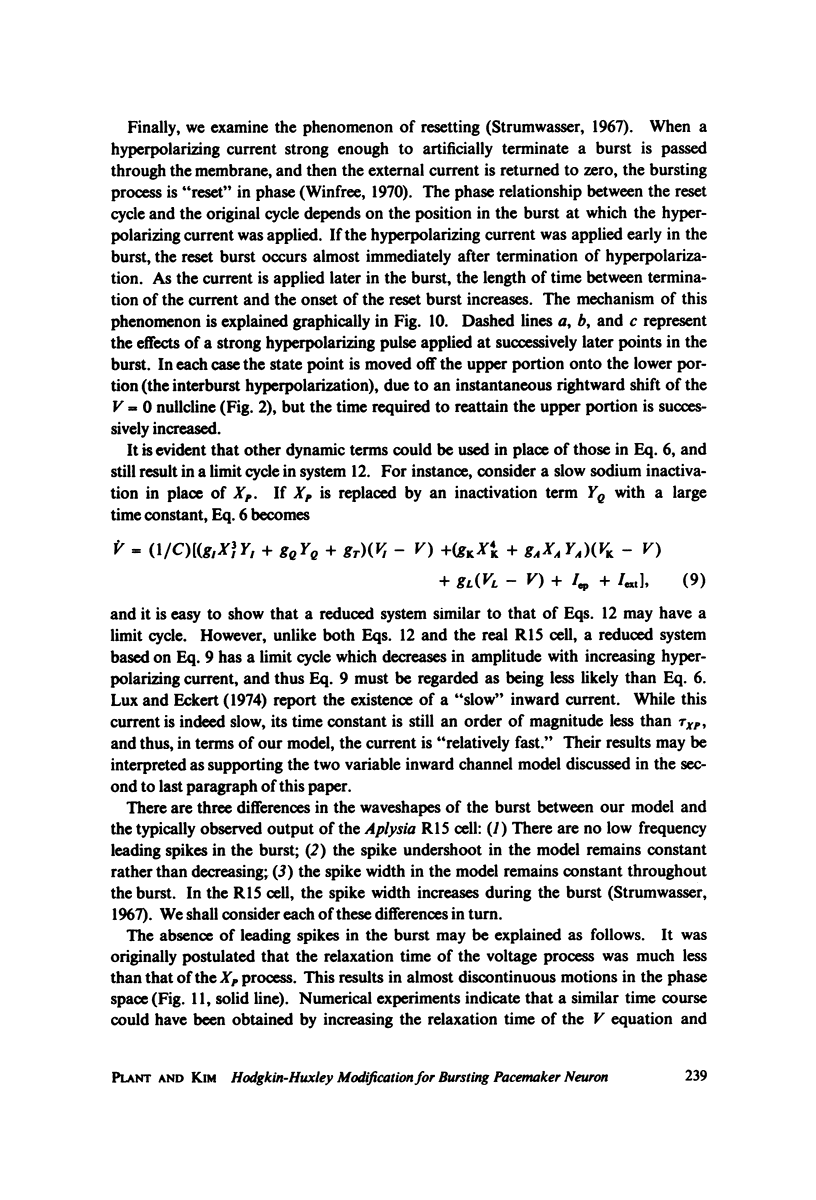
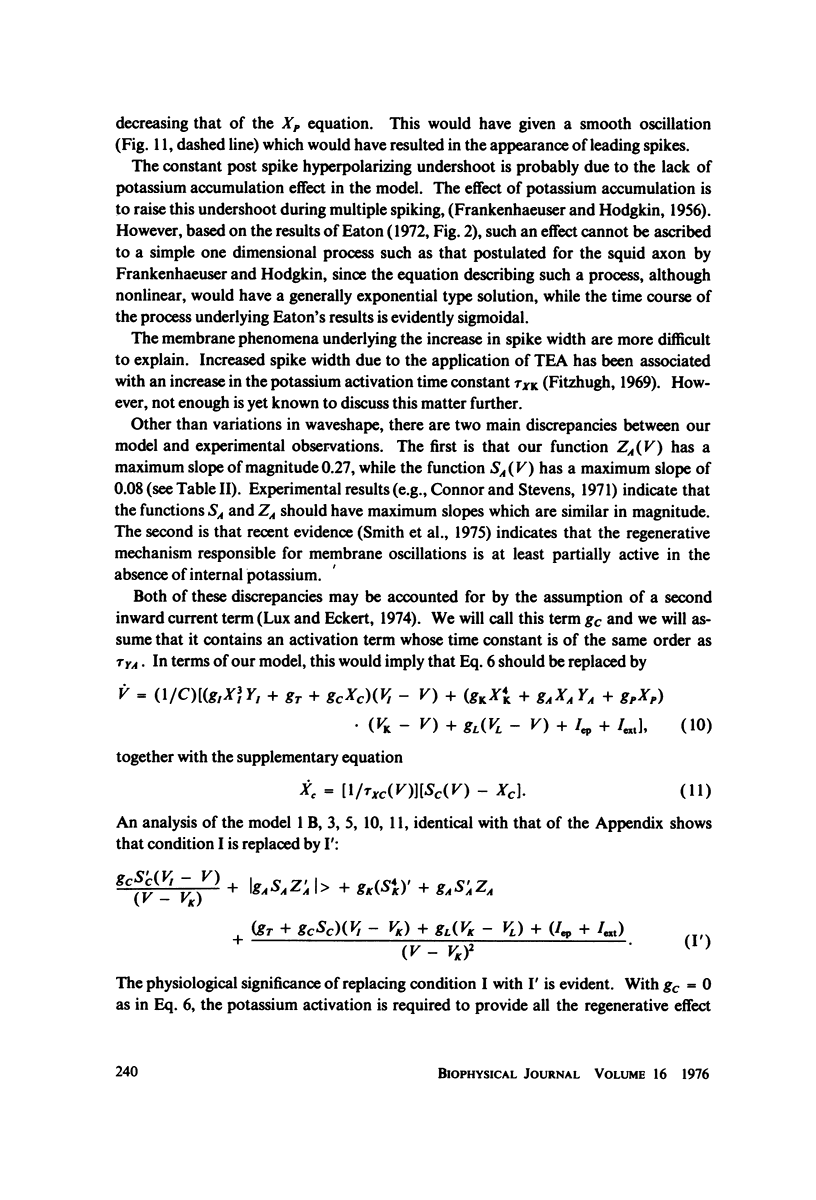
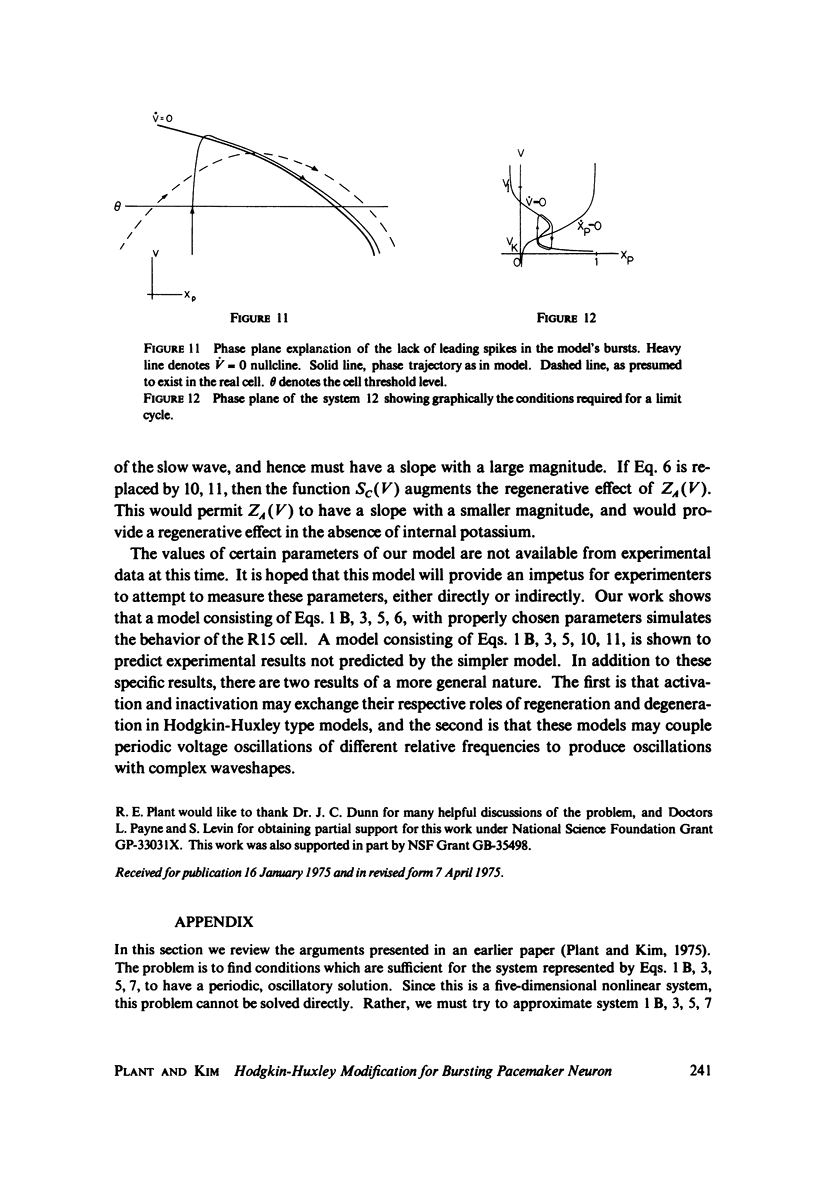
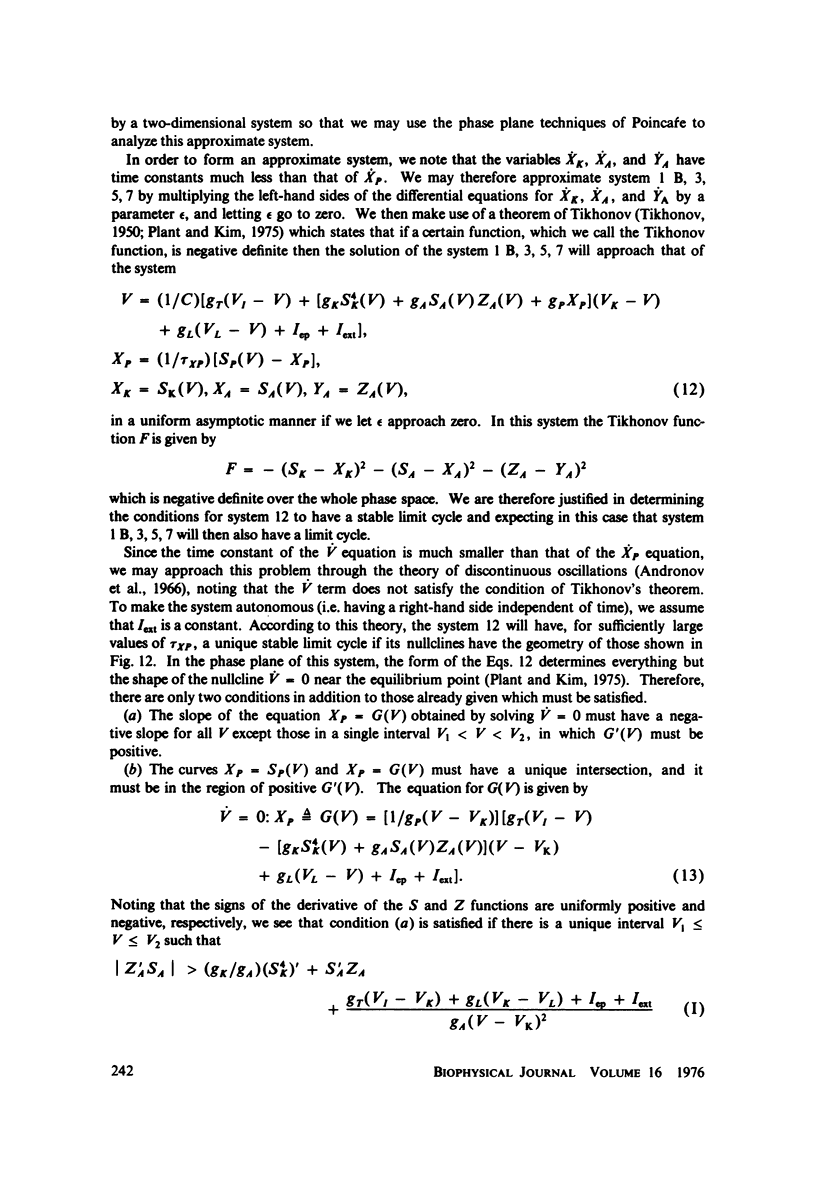
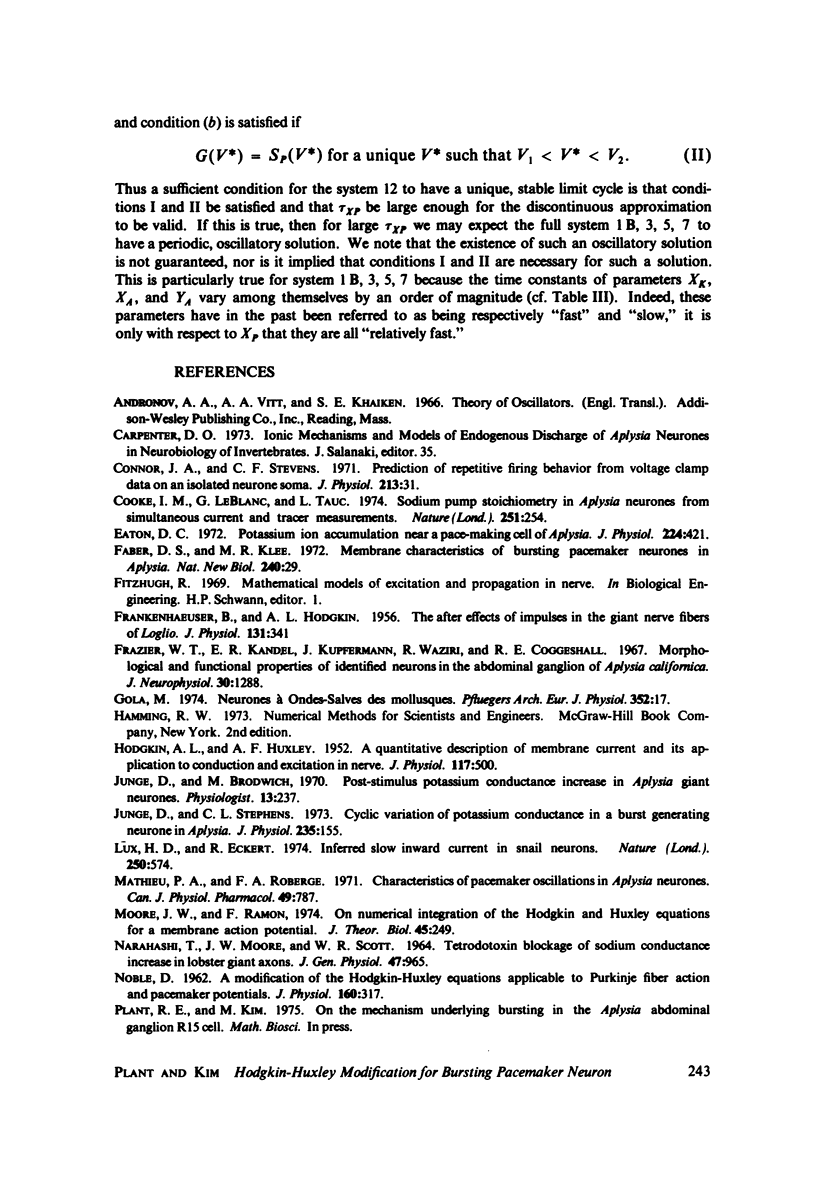

Images in this article
Selected References
These references are in PubMed. This may not be the complete list of references from this article.
- Connor J. A., Stevens C. F. Prediction of repetitive firing behaviour from voltage clamp data on an isolated neurone soma. J Physiol. 1971 Feb;213(1):31–53. doi: 10.1113/jphysiol.1971.sp009366. [DOI] [PMC free article] [PubMed] [Google Scholar]
- Cooke I. M., Leblanc G., Tauc L. Sodium pump stoichiometry in Aplysia neurones from simultaneous current and tracer measurements. Nature. 1974 Sep 20;251(5472):254–256. doi: 10.1038/251254a0. [DOI] [PubMed] [Google Scholar]
- Eaton D. C. Potassium ion accumulation near a pace-making cell of Aplysia. J Physiol. 1972 Jul;224(2):421–440. doi: 10.1113/jphysiol.1972.sp009903. [DOI] [PMC free article] [PubMed] [Google Scholar]
- Gola M. Neurones à ondes-salves des mollusques. Variations cycliques lentes des conductances ioniques. Pflugers Arch. 1974;352(1):17–36. doi: 10.1007/BF01061947. [DOI] [PubMed] [Google Scholar]
- HODGKIN A. L., HUXLEY A. F. A quantitative description of membrane current and its application to conduction and excitation in nerve. J Physiol. 1952 Aug;117(4):500–544. doi: 10.1113/jphysiol.1952.sp004764. [DOI] [PMC free article] [PubMed] [Google Scholar]
- Junge D., Stephens C. L. Cyclic variation of potassium conductance in a burst-generating neurone in Aplysia. J Physiol. 1973 Nov;235(1):155–181. doi: 10.1113/jphysiol.1973.sp010382. [DOI] [PMC free article] [PubMed] [Google Scholar]
- Lux H. D., Eckert R. Inferred slow inward current in snail neurones. Nature. 1974 Aug 16;250(467):574–576. doi: 10.1038/250574a0. [DOI] [PubMed] [Google Scholar]
- Mathieu P. A., Roberge F. A. Characteristics of pacemaker oscillations in Aplysia neurons. Can J Physiol Pharmacol. 1971 Sep;49(9):787–795. doi: 10.1139/y71-108. [DOI] [PubMed] [Google Scholar]
- Moore J. W., Ramon F. On numerical integration of the Hodgkin and Huxley equations for a membrane action potential. J Theor Biol. 1974 May;45(1):249–273. doi: 10.1016/0022-5193(74)90054-x. [DOI] [PubMed] [Google Scholar]
- NARAHASHI T., MOORE J. W., SCOTT W. R. TETRODOTOXIN BLOCKAGE OF SODIUM CONDUCTANCE INCREASE IN LOBSTER GIANT AXONS. J Gen Physiol. 1964 May;47:965–974. doi: 10.1085/jgp.47.5.965. [DOI] [PMC free article] [PubMed] [Google Scholar]
- NOBLE D. A modification of the Hodgkin--Huxley equations applicable to Purkinje fibre action and pace-maker potentials. J Physiol. 1962 Feb;160:317–352. doi: 10.1113/jphysiol.1962.sp006849. [DOI] [PMC free article] [PubMed] [Google Scholar]
- Smith T. G., Jr, Barker J. L., Gainer H. Requirements for bursting pacemaker potential activity in molluscan neurones. Nature. 1975 Feb 6;253(5491):450–452. doi: 10.1038/253450a0. [DOI] [PubMed] [Google Scholar]
- Strumwasser F. Seventeenth Bowditch lecture. Neural and humoral factors in the temporal organization of behavior. Physiologist. 1973 Feb;16(1):9–42. [PubMed] [Google Scholar]
- Wilson W. A., Wachtel H. Negative resistance characteristic essential for the maintenance of slow oscillations in bursting neurons. Science. 1974 Dec 6;186(4167):932–934. doi: 10.1126/science.186.4167.932. [DOI] [PubMed] [Google Scholar]



